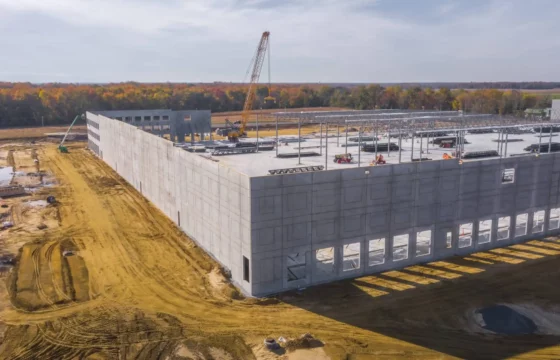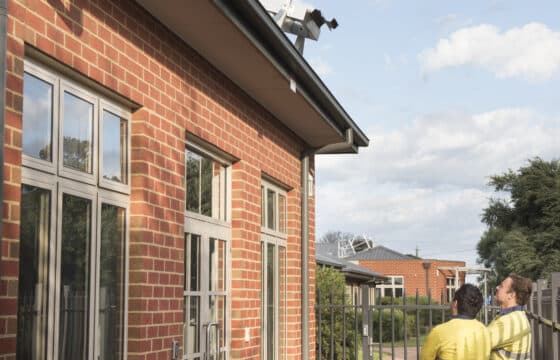Understanding your legal obligation when it comes to safety – Part three
Understanding your legal obligation when it comes to safety – Part three
In part three of my interview series with Michael Tooma, I spoke to Michael about the term “reasonably practicable” and what this means as a compliance benchmark in Australian Standards.
Click here for Part One | Click here for Part Two
How do we know what is considered reasonably practicable?
– Script –
The codes of practice and Australian Standards are examples of what people say what people should be doing in relation to health and safety on a particular issue. Codes of practice in particular are used as evidence of what is reasonably practicable in the circumstances and really if you fail to comply with a code of practice which is relevant to an issue, well you’re going to have to have a very good excuse as to why you haven’t done this, why you have failed to comply with the code of practice. Because the legislation says it can be used as evidence of what is reasonably practicable in the circumstances.
I often get the question, “How does cost get considered when deciding reasonable practicability?” Well it’s interesting; it’s one component of reasonable practicability. And reasonable practicability is two words that have been around for a very long time. They have created a lot of angst but at the end of the day it is a very simple concept. It’s a weighing up exercise. It’s on the one hand looking at the risk looked at in the context of its likelihood and consequences and on the other the cost and availability of controls. And those things are looked at in a point in time analysis. So, you look at the risks involved and you look at extent of the risks, how likely it is and what are the consequences associated with it and then you weigh that up against the cost of mitigating that risk and you have to look at it in that holistic way. But you also have to look at it in relation to that particular risk and not all other risks that might be accumulated because you have got to compare apples with apples. That risk compared to the cost of mitigating that risk not all risks compared to the cost of mitigating one risk. The reason that I say that is because I often get this proposition put to me but if we do that across all our buildings we’ll go broke. But that is not the calculation, that’s not how the courts look at it. The courts look at the particular risk compared to the cost associated with it.
How do you budget for fall prevention systems?
Every recommendation in risk assessment reports written by Workplace Access & Safety are costed specifically for each site to assist with accurate budgeting. Electronic flexible reporting tools allow you to dissect the recommendations by state, site or priority ranking.
The good news is that the safety professional’s best friend – the hierarchy of controls – tends to work well for corporate accountants since the lowest order control for any risk is also often the cheapest over its lifetime.
From a management perspective too, the most complicated safety systems are generally the least effective. Any fall prevention system that involves a harness, for example, also brings the need for second workers, rescue plans, regular inspections and a tide of paperwork.
Sadly, this is where many facility managers face their greatest challenge. The main source of information about controls is equipment vendors, who are also generally enthusiastic promoters of complex, expensive solutions.
Remain stubbornly true to the hierarchy of controls and, almost invariably, there will be significant lifetime savings and safety gains to be won. Such practicality will also win OHS professionals many friends at the executive management level and invaluable respect from users.
So, how then to get the safest, most workable solution and a proper costing? Choose your providers with great care. Look for those who participate at an industry level, are trainers, who provide impressive referees and, importantly, have a suite of solutions on offer so they can supply the appropriate match for your circumstances.
Ask to see sample reports in advance and, for a real insight, learn how they manage their own safety obligations. Photocopied safe work method statements (SWMS) for a height safety installation, for example, warn that a service provider’s safety credentials are little more than skin deep.
Specialists are normally best geared up to the job correctly and can often deliver savings due to greater efficiencies. Workplace Access & Safety designs and prefabricates fall prevention systems in our own factories to minimise disruption to your site and keep labour costs low.
Match the costings with the priorities identified by the risk assessment to create a budget. Of course, no organisation can realistically address all risks instantly, so the budget could have several phases to allow for systematic project management.
Click here for Part One | Click here for Part Two
Should we be concerned if our safe work at height system is only a little bit out?
– Script –
The codes of practice and Australian Standards are examples of what people say what people should be doing in relation to health and safety on a particular issue. Codes of practice in particular are used as evidence of what is reasonably practicable in the circumstances and really if you fail to comply with a code of practice which is relevant to an issue, well you’re going to have to have a very good excuse as to why you haven’t done this, why you have failed to comply with the code of practice. Because the legislation says it can be used as evidence of what is reasonably practicable in the circumstances.
I often get the question, “How does cost get considered when deciding reasonable practicability?” Well it’s interesting; it’s one component of reasonable practicability. And reasonable practicability is two words that have been around for a very long time. They have created a lot of angst but at the end of the day it is a very simple concept. It’s a weighing up exercise. It’s on the one hand looking at the risk looked at in the context of its likelihood and consequences and on the other the cost and availability of controls. And those things are looked at in a point in time analysis. So, you look at the risks involved and you look at extent of the risks, how likely it is and what are the consequences associated with it and then you weigh that up against the cost of mitigating that risk and you have to look at it in that holistic way. But you also have to look at it in relation to that particular risk and not all other risks that might be accumulated because you have got to compare apples with apples. That risk compared to the cost of mitigating that risk not all risks compared to the cost of mitigating one risk. The reason that I say that is because I often get this proposition put to me but if we do that across all our buildings we’ll go broke. But that is not the calculation, that’s not how the courts look at it. The courts look at the particular risk compared to the cost associated with it.
How do you budget for fall prevention systems?
Every recommendation in risk assessment reports written by Workplace Access & Safety are costed specifically for each site to assist with accurate budgeting. Electronic flexible reporting tools allow you to dissect the recommendations by state, site or priority ranking.
The good news is that the safety professional’s best friend – the hierarchy of controls – tends to work well for corporate accountants since the lowest order control for any risk is also often the cheapest over its lifetime.
From a management perspective too, the most complicated safety systems are generally the least effective. Any fall prevention system that involves a harness, for example, also brings the need for second workers, rescue plans, regular inspections and a tide of paperwork.
Sadly, this is where many facility managers face their greatest challenge. The main source of information about controls is equipment vendors, who are also generally enthusiastic promoters of complex, expensive solutions.
Remain stubbornly true to the hierarchy of controls and, almost invariably, there will be significant lifetime savings and safety gains to be won. Such practicality will also win OHS professionals many friends at the executive management level and invaluable respect from users.
So, how then to get the safest, most workable solution and a proper costing? Choose your providers with great care. Look for those who participate at an industry level, are trainers, who provide impressive referees and, importantly, have a suite of solutions on offer so they can supply the appropriate match for your circumstances.
Ask to see sample reports in advance and, for a real insight, learn how they manage their own safety obligations. Photocopied safe work method statements (SWMS) for a height safety installation, for example, warn that a service provider’s safety credentials are little more than skin deep.
Specialists are normally best geared up to the job correctly and can often deliver savings due to greater efficiencies. Workplace Access & Safety designs and prefabricates fall prevention systems in our own factories to minimise disruption to your site and keep labour costs low.
Match the costings with the priorities identified by the risk assessment to create a budget. Of course, no organisation can realistically address all risks instantly, so the budget could have several phases to allow for systematic project management.
Click here for Part One | Click here for Part Two
Should we be concerned if our safe work at height system is only a little bit out?
About The Author

Carl Sachs is the Managing Director of the working at heights specialists Workplace Access & Safety. He is a renowned expert in height safety and consults to major corporations and government on working at height. He represents the FMA (Facility Managers Association) on Australian standard committee AS/NZS1891, and was a committee member that redrafted AS1657. He is Chairman of the Technical Committee of WAHA (Working at Heights Association), and is a director of the Association.


